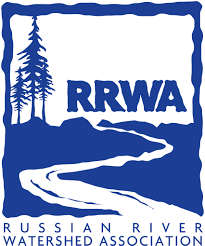Growing a garden may seem mysterious to some, however by implementing a few tricks of the trade, you can grow the garden of your dreams. Here are six simple tips that will guide you along the way to success.
1. It all starts with the soil. By simply increasing the health of your soil you are increasing the longevity of your plants plus reducing pest problems. By amending your soil with good quality compost, either homemade or purchased from your local garden center, you are encouraging healthy root development, increasing the soil microbiology (all of the living organisms within the soil), aiding in nutrient retention, improving the soil structure and improving the water holding capacity. It is a win-win when you amend your soil with compost.
2. Feed your plants organic fertilizers. By feeding your plants with organic fertilizers instead of synthetic fertilizer, you are increasing the health of your plants, as well as reducing the conditions which can create pest problems. Synthetic fertilizers produce rapid growth spurts to the plants. This produces tender, vulnerable new growth, which is highly susceptible to insect and disease problems. Also, synthetic fertilizers are high in salts, which over time diminishes the quality of your soil and ability to grow healthy plants. Organic fertilizers produce slow, strong, steady growth. Organic fertilizers also develop a symbiotic relationship between beneficial bacteria and fungi that increase the nutrient uptake for the root systems of your plants. Organic fertilizers are truly a sustainable food for your plants.
3. The magic of mulch! There are so many benefits to using mulch around your garden. Mulch is used to protect the soil and add a nice finishing touch to the garden. Not only does it look lovely, but can significantly reduce soil water evaporation, which means you don’t need to water as often. Mulch also adds nutrients to the soil as it breaks down and helps to suppress weeds. It protects the soil by keeping it cool in the summer and warm in the winter. Mulch reduces erosion and deterioration of the soil. It also provides habitat for many of our beneficial insects, such as ladybugs.
4. Know your plant and know its needs. Planting the right plant in the right place will lead to success. It is important to know how the sun moves through your garden so that you can plant sun lovers in the sun and shade lovers in the shade. It is also important to understand how big the plant will be at maturity, so that it doesn’t outgrow its location. Grouping plants together with similar water needs is also ideal for the long‑term health of the plant.
5. Water deeply. Watering deeply encourages the roots to grow deeply. As the plant matures, begin to water deeper and less often, allow the top few inches of the soil to dry out between watering. This is the best technique for your perennials, trees and shrubs as they become established.
6. Plant it and they will come. By adding a variety of flowering plants, you can attract the beneficial insects that create balance within the garden. Include plants with small clusters of flowers such as; yarrow, ceanothus, alyssum, and agastache, or plants that look like a daisy or sunflower such as; cosmos, asters, gaillardia, and echinacea. These are plants that attract and support our beneficial insects. When we grow a diversity of flowering plants, we attract a diversity of beneficial insects, which will manage our harmful pest.
For more information about attracting beneficial to your garden, check out these two brochures from the Our Water Our World website:
The 10 Most Wanted Bugs in Your Garden and the Planting a Healthy Garden fact sheet.
Our Water, Our World helps residents manage their home and garden pests in a way that helps protect our watershed. The program provides information about Integrated Pest Management (IPM) to consumers in nurseries and hardware stores. RRWA is proud to offer the Our Water, Our World program at sixteen stores in the Russian River watershed. For a list of locations visit www.rrwatershed.org/project/our-water-our-world.
For fact sheets suggesting methods to manage specific pests using the least toxic methods, product guides to less toxic products for managing common pests, and more, visit OurWaterOurWorld.org
This article was authored by Suzanne Bontempo of Plant Harmony, on behalf of RRWA. RRWA (www.rrwatershed.org) is an association of local public agencies in the Russian River Watershed that have come together to coordinate regional programs for clean water, habitat restoration and watershed enhancement.








